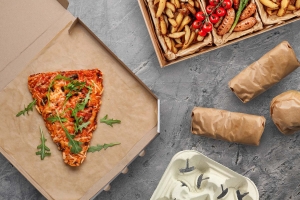Yogender Singh, India, Asia-Pacific Correspondent04.13.21
With a population of more than 84 million, rising living standards and average economic growth in the last few years, Iran has emerged as one of the largest producers of paints and coatings in the region.
Though growth in the sector has been marred by the economic sanctions, which have been imposed on the country in the wake of its nuclear ambitions.
Overview
Iran is the 18th-largest country in the world in terms of geographical spread with a total area of 1,648,195 square kilometers.
It is a country of particular geopolitical significance owing to its location in the Middle East and central Eurasia.
The largest natural gas supplier in the world and the fourth-largest proven petroleum reserves also makes Iran one of the most vibrant markets for paint and coating producers.
Huge oil reserves make Iranian paint and coating producers very competitive in terms of production cost as crude-based raw materials are available in the country at reasonable costs.
Estimated at around $560 million (at the end of last Iranian financial year in March 2020), the Iranian paint and coatings market is dominated by domestic producers.
Architectural paint accounts for 58 percent of the total market share of the overall paint and coating industry on a value basis.
Protective coating with a total value of $90 million accounts for nearly 16 percent of the total Iranian paints and coating market.
Huge oil and gas infrastructure in the country has been a steady demand driver of coatings demand in the protective segment.
In the last few years, demand from the rapidly growing petrochemical sector has also contributed to the demand for protective coatings.
Growth in the protective coating sub-segment has outstripped the growth demand of other sub-segments by a wide margin in the last decade.
With total revenue of $41 million, powder coatings account for nearly seven percent of the Iranian paint sector.
Marine coatings with a market share of six percent have also witnessed steady growth rates in the last few years.
According to the data from the Paint and Resin Manufacturers Association of Iran, currently, there are over 350 authorized paint producing factories with a total capacity of 900,000 tons of various types of decorative and industrial paints.
Besides this, several unauthorized producers are active in the production of resins used in the paint industry.
Foreign paint and coating producers have had limited success in the Iranian market.
Economic sanctions have had a major role in the disruption of production activities of foreign paint producers in the country.
Jotun and Kansai have been the two prominent producers to invest in manufacturing facilities in Iran but had to cut down the production due to economic sanctions.
Architectural Coatings
The architectural coatings sub-segment has registered muted growth rates in the last three years in Iran.
Economic sanctions have had a profound impact on the construction sector in the country.
Most of the demand of the architectural segment has been originating from repainting exercises.
Some of the ambitious government housing schemes such as the Mehr Housing scheme is in limbo for many years.
Automotive coatings
Automotive paints and coatings are one of the most important sub-segment of the Iranian paints and coating industry.
The automotive coating segment has registered steady growth rates in the last few years on account of a steady growth of automotive production in the country.
Iran is the most significant automotive producer in the entire Middle East region.
Despite a small population, Iran has an installed capacity to produce about 1.3 million pieces of automotive in a year.
Three major Iranian carmakers, namely Iran Khodro Company (IKCO), SAIPA Group, and Pars Khodro, manufactured 817,069 vehicles during the first 11 months of the current Iranian calendar year (March 20, 2020- Feb. 18, 2021).
Major paint and coating producers
Established in 1939, Rangsazi Iran was the first modern paint factory in Iran and the wider Middle East region.
Currently, the company is the largest producer of the top producer of decorative and industrial paints on a volume basis.
The company’s first factory was set up in Zargande in the Shemiran district of Tehran. In 1959, a larger facility was acquired by the company on Saveh road in Tehran.
Currently, the company is considered the largest paint and coating producer in the country.
During the early years, the company cooperated with the Danish Sadolin Company and launched its first product under the Unico trademark. In later year, the company ventured into the production of marine paints for the domestic market.
Currently, Pars Pamchal Company has an annual output of 15,000 Mt of various kinds of specialized, protective and industrial paints, about 10,000 MT of paints used in the building industry and 10,000 MT of various assortment of alkyd reins, drying and hardening agents as well as epoxy-based specialized resins which, in addition to meeting the domestic requirements, are exported too.
Japanese paint major Kansai Paint entered the Iranian market in 2009, Kansai introduced the whole range of automotive OEM, industrial and automotive refinish products with cutting-edge technology to Iran’s market.
Kansai established a manufacturing facility near Tehran with an annual capacity to produce 18 million liters of paint products which became fully functional in 2010.
This plant was completed in a record time and had the distinction of the first plant in Iran to manufacture auto refinish, industrial and automotive topcoats as well as CED (Cathode Electro Deposition) paint for the automotive OEM sector involving the full transfer of technology and back-up support from Kansai Paint, Japan.
However, in 2012, Kansai had to exit the Iranian market due to economic sanctions.
Though growth in the sector has been marred by the economic sanctions, which have been imposed on the country in the wake of its nuclear ambitions.
Overview
Iran is the 18th-largest country in the world in terms of geographical spread with a total area of 1,648,195 square kilometers.
It is a country of particular geopolitical significance owing to its location in the Middle East and central Eurasia.
The largest natural gas supplier in the world and the fourth-largest proven petroleum reserves also makes Iran one of the most vibrant markets for paint and coating producers.
Huge oil reserves make Iranian paint and coating producers very competitive in terms of production cost as crude-based raw materials are available in the country at reasonable costs.
Estimated at around $560 million (at the end of last Iranian financial year in March 2020), the Iranian paint and coatings market is dominated by domestic producers.
Architectural paint accounts for 58 percent of the total market share of the overall paint and coating industry on a value basis.
Protective coating with a total value of $90 million accounts for nearly 16 percent of the total Iranian paints and coating market.
Huge oil and gas infrastructure in the country has been a steady demand driver of coatings demand in the protective segment.
In the last few years, demand from the rapidly growing petrochemical sector has also contributed to the demand for protective coatings.
Growth in the protective coating sub-segment has outstripped the growth demand of other sub-segments by a wide margin in the last decade.
With total revenue of $41 million, powder coatings account for nearly seven percent of the Iranian paint sector.
Marine coatings with a market share of six percent have also witnessed steady growth rates in the last few years.
According to the data from the Paint and Resin Manufacturers Association of Iran, currently, there are over 350 authorized paint producing factories with a total capacity of 900,000 tons of various types of decorative and industrial paints.
Besides this, several unauthorized producers are active in the production of resins used in the paint industry.
Foreign paint and coating producers have had limited success in the Iranian market.
Economic sanctions have had a major role in the disruption of production activities of foreign paint producers in the country.
Jotun and Kansai have been the two prominent producers to invest in manufacturing facilities in Iran but had to cut down the production due to economic sanctions.
Architectural Coatings
The architectural coatings sub-segment has registered muted growth rates in the last three years in Iran.
Economic sanctions have had a profound impact on the construction sector in the country.
Most of the demand of the architectural segment has been originating from repainting exercises.
Some of the ambitious government housing schemes such as the Mehr Housing scheme is in limbo for many years.
Automotive coatings
Automotive paints and coatings are one of the most important sub-segment of the Iranian paints and coating industry.
The automotive coating segment has registered steady growth rates in the last few years on account of a steady growth of automotive production in the country.
Iran is the most significant automotive producer in the entire Middle East region.
Despite a small population, Iran has an installed capacity to produce about 1.3 million pieces of automotive in a year.
Three major Iranian carmakers, namely Iran Khodro Company (IKCO), SAIPA Group, and Pars Khodro, manufactured 817,069 vehicles during the first 11 months of the current Iranian calendar year (March 20, 2020- Feb. 18, 2021).
Major paint and coating producers
Rangsazi
Established in 1939, Rangsazi Iran was the first modern paint factory in Iran and the wider Middle East region.
Currently, the company is the largest producer of the top producer of decorative and industrial paints on a volume basis.
The company’s first factory was set up in Zargande in the Shemiran district of Tehran. In 1959, a larger facility was acquired by the company on Saveh road in Tehran.
Currently, the company is considered the largest paint and coating producer in the country.
Pars Pamchal Company
Pars Pamchal Chemical Co. (Public Joint Stock) was established in the early 1970s in Alborz Township/ Ghazvin province.During the early years, the company cooperated with the Danish Sadolin Company and launched its first product under the Unico trademark. In later year, the company ventured into the production of marine paints for the domestic market.
Currently, Pars Pamchal Company has an annual output of 15,000 Mt of various kinds of specialized, protective and industrial paints, about 10,000 MT of paints used in the building industry and 10,000 MT of various assortment of alkyd reins, drying and hardening agents as well as epoxy-based specialized resins which, in addition to meeting the domestic requirements, are exported too.
Kansai Paints
Japanese paint major Kansai Paint entered the Iranian market in 2009, Kansai introduced the whole range of automotive OEM, industrial and automotive refinish products with cutting-edge technology to Iran’s market.Kansai established a manufacturing facility near Tehran with an annual capacity to produce 18 million liters of paint products which became fully functional in 2010.
This plant was completed in a record time and had the distinction of the first plant in Iran to manufacture auto refinish, industrial and automotive topcoats as well as CED (Cathode Electro Deposition) paint for the automotive OEM sector involving the full transfer of technology and back-up support from Kansai Paint, Japan.
However, in 2012, Kansai had to exit the Iranian market due to economic sanctions.
















